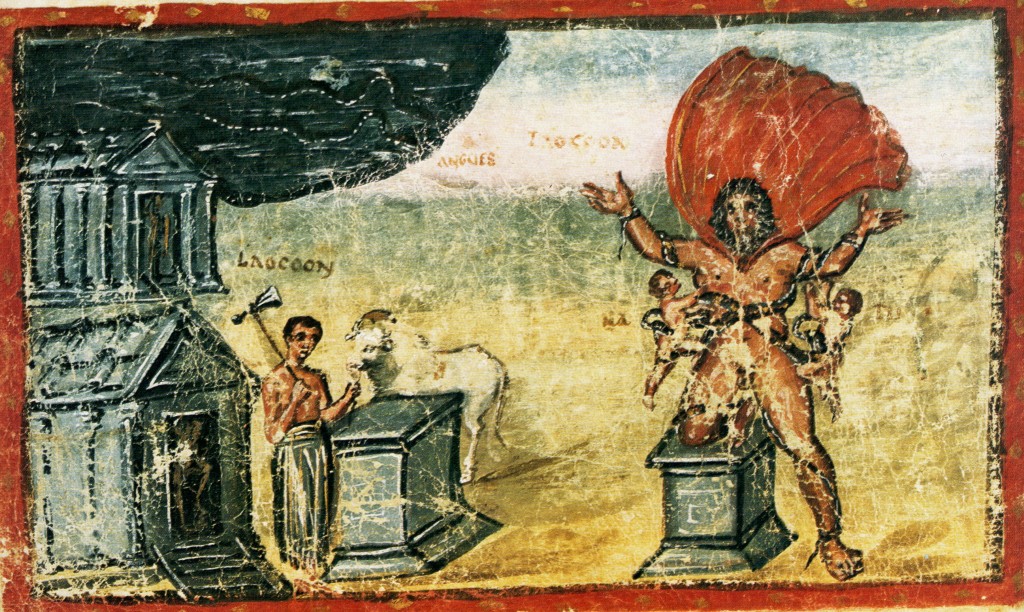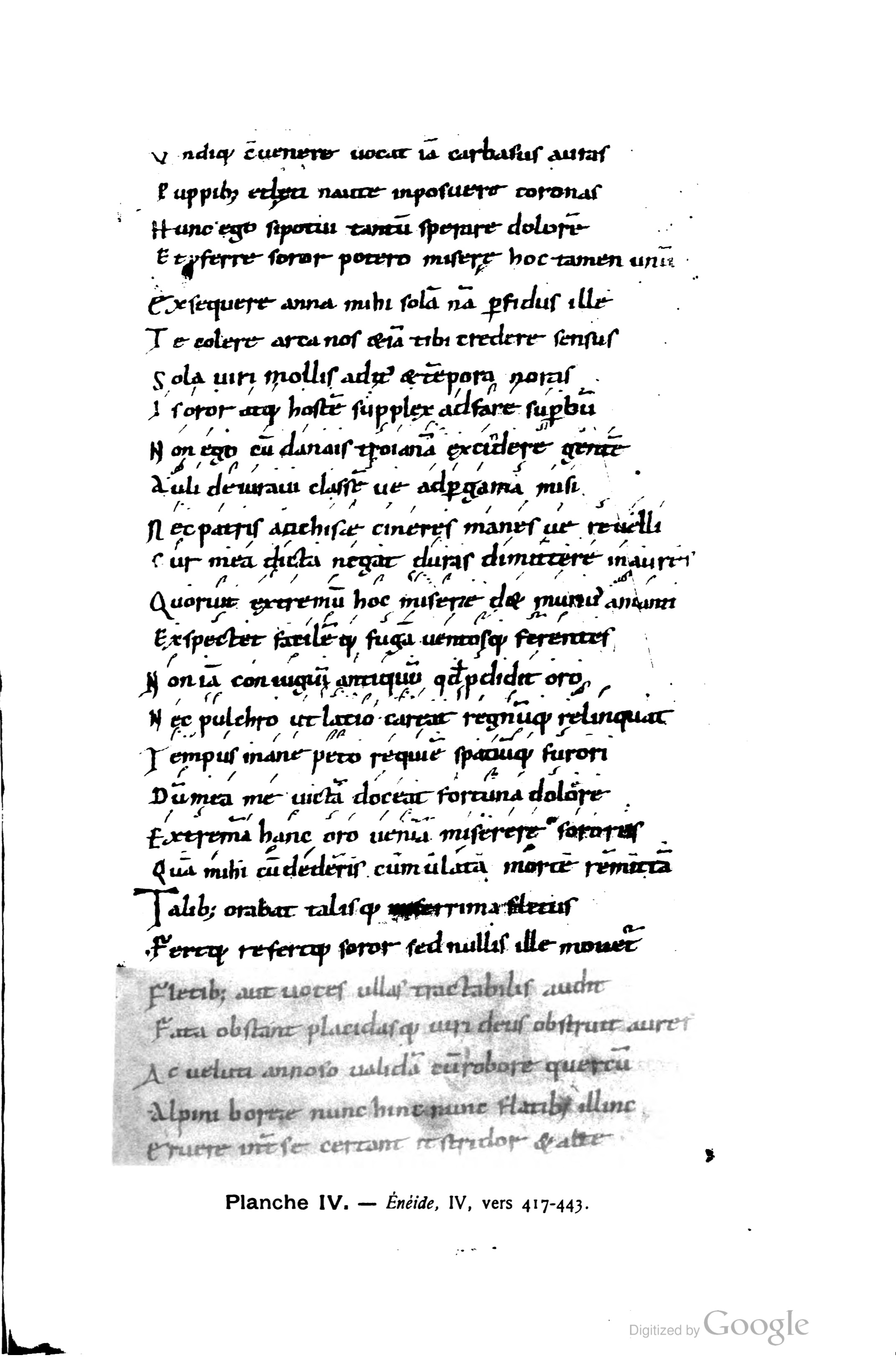by Martin Eisner
When Dante meets Virgil in the first canto of the Inferno, he identifies the classical poet with the material book through which he came to know him, which he calls a “volume” [volume]. Given Dante’s interest in the physical features of books from the first paragraph of the Vita nuova to the last canto of the Paradise, this passage raises the question: what did Dante’s copy of Virgil’s “volume” look like?

Laocoon in the Vatican Virgil (Vatican, Biblioteca Apostolica, Cod. Vat. lat. 3225, c. 18v). © All Rights Reserved, Biblioteca Apostolica Vaticana.
It is not likely that Dante would have access to a lush, Late Antique copy such as the Vatican Virgil with its illustrations of several scenes from the poem, pictured above. Indeed, the copy that scholars have identified on the basis of textual evidence—Florence, Biblioteca Medicea-Laurenziana, Ashburnham 23—may not be as visually exciting, but it is just as fascinating, because it contains musical notations (or “neumes”) for five passages of poem.

Virgil, Aeneid 4 with musical notation (Biblioteca Medicea Laurenziana, Ashburnham 23). © All Rights Reserved, Biblioteca Medicea Laurenziana
Each of these five passages from the Aeneid that have musical notation have a significant links to the Comedy. The passages and their possible resonances are as follows:
- Laocoon on the dangers of Greeks bearing gifts (Aeneid 2.42-50), with special mention of Ulysses as trickster, which may inform elements of Dante’s representation of Ulysses in Inferno 26.
- Aeneas’ vision of Hector whose body still bears the scars of battle (Aeneid 2.274-86), which suggests interesting parallels to consider for Dante’s discussion of aerial bodies and somatomorphic souls in Purgatory 25.
- Dido’s appeal to Anna (Aeneid 4.424-36) which includes “i, soror…morte remittam” including “miserere sororis” (v. 435) that anticipates the pilgrim’s first words “miserere di me” (Inf. 1.65). Commentators have often noted that Dante’s “miserere di me” echoes Psalm 50, but the connection to Dido would extend Dante’s identification with Dido which is explicit in Purgatory 30 when he quotes Dido’s lines about the “antica fiamma.”
- Dido’s lament upon seeing Aeneas’ left behind clothing (Aeneid 4.651-58).
- A description of Aeneas about to speak to Turnus. (Aeneid 12.945-46)
The first four passages are all neumed in other manuscripts (such as Munich, Bayerische Staatsbibliothek, Clm 21562), so these episodes are prominent in the medieval reception of Virgil more broadly.
Dante uses Virgil throughout the Commedia to structure and populate his description of the otherworld, to guide the behavior of other poets such as Statius, and to accompany the re-appearance of Beatrice in the earthly paradise. To the well-known episodes of Charon, Cerberus, and so on, we can add these scenes that were highlighted in Ashburnham 23. Whether or not Dante knew what these neumes meant is perhaps an open question. His reflections on music are several but elusive. What we can say is that the question of what Dante’s volume of Virgil looked like opens up new avenues for future research.
Selected Bibliography
Barolini, Teodolinda. Dante’s Poets: textuality and truth in the Comedy. Princeton: Princeton University Press, 1984.
Black, Robert. Humanism and Education in Medieval and Renaissance Italy: Tradition and Innovation in Latin Schools from the Twelfth to the Fifteenth Century. Cambridge: Cambridge University Press, 2001.
Eisner, Martin. “The Materiality of the Text and Manuscript Culture.” The Oxford Handbook of Dante, Edited by Manuele Gragnolati, Elena Lombardi, and Francesca Southerden, 2021. doi:10.1093/oxfordhb/9780198820741.013.2.
Hollander, Robert. “Dante’s Use of Aeneid I in Inferno I and II.” Comparative Literature 20, no. 2 (1968): 142-56. Accessed July 5, 2021. doi:10.2307/1770035.
Raffa, Guy P. “A Beautiful Friendship: Dante and Vergil in the Commedia.” MLN 127, no. 1 (2012): S72-S80. doi:10.1353/mln.2012.0043.